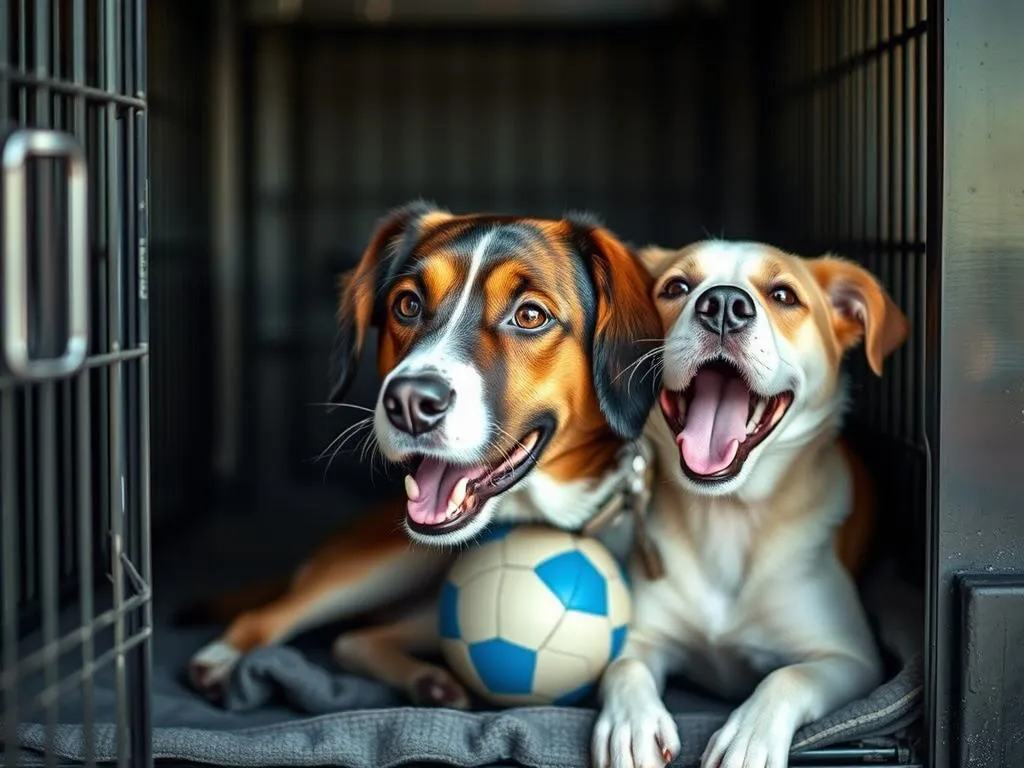
Introduction
Crate training is a crucial aspect of responsible dog ownership. It provides a safe space for your furry friend while also serving as a valuable tool for housebreaking and ensuring their safety when you’re away. However, many dog owners face challenges when trying to keep their dogs engaged and happy in the crate. How to keep dog busy in crate becomes a pressing question as boredom can lead to destructive behaviors and anxiety. This article aims to equip you with tips and strategies to keep your dog engaged, ensuring a positive experience in their crate.
Understanding Your Dog’s Needs
Dogs as Social Animals
Dogs are inherently social creatures. They thrive on interaction, companionship, and mental stimulation. Recognizing that your dog has social needs is the first step in ensuring they remain content in their crate. If your dog feels isolated or bored, they may exhibit unwanted behaviors such as barking, whining, or destructive chewing. Providing a stimulating environment is essential for their emotional well-being.
Recognizing Signs of Boredom
Understanding the signs of boredom in dogs is key to addressing their needs. Common behaviors that indicate boredom include:
- Excessive barking or whining
- Chewing on the crate or its contents
- Digging or scratching at the crate
- Lethargy or disinterest in activities
Long-term boredom can lead to anxiety and behavioral issues, making it vital to keep your dog entertained while in the crate.
Preparing the Crate
Choosing the Right Crate Size
One of the first steps in ensuring your dog is comfortable in their crate is choosing the right size. A crate that is too small will make your dog feel cramped, while one that is too large may encourage them to use one corner as a bathroom. The ideal crate should allow your dog to stand up, turn around, and lie down comfortably.
Creating a Cozy Environment
A cozy environment can make a significant difference in how your dog perceives their crate. Consider adding:
- Soft bedding to provide comfort
- Favorite toys to encourage play
- Comfort items, such as a worn t-shirt, to provide a sense of security
By making the crate inviting, you can help your dog feel relaxed and less anxious.
Adding Familiar Scents
Including items with your scent can also help soothe your dog. Familiar scents promote a sense of security and can reduce anxiety when left alone. Consider placing a worn t-shirt, a blanket, or a towel with your scent inside the crate.
Engaging Activities for Dogs in a Crate
Interactive Toys
Interactive toys are a fantastic way to keep your dog mentally stimulated while in the crate. These toys often require problem-solving skills and can keep your dog engaged for longer periods. Popular types of interactive toys include:
- Puzzle toys that dispense treats
- Kong toys that can be filled with peanut butter or other treats
Recommendations for popular brands include KONG, Outward Hound, and PetSafe. These toys not only entertain but also challenge your dog mentally.
Chew Toys
Chew toys are essential for providing mental stimulation and satisfying your dog’s natural urge to chew. They can help prevent boredom and destructive behaviors. Types of chew toys include:
- Rawhide: A classic option, but ensure they are safe and suitable for your dog’s size and chewing habits.
- Rubber toys: Durable and often infused with flavors, these can keep your dog engaged for hours.
Frozen Treats
Frozen treats are an excellent way to keep your dog busy for extended periods. You can create homemade frozen treats using ingredients like yogurt, peanut butter, and fruits. Here’s a simple recipe:
Frozen Yogurt Treats:
1. Mix plain yogurt with mashed bananas or peanut butter.
2. Pour the mixture into ice cube trays or silicone molds.
3. Freeze for a few hours until solid.
These long-lasting treats can provide entertainment and help keep your dog cool during warmer months.
Training Techniques
Gradual Crate Training
Gradual crate training is vital for helping your dog feel comfortable in their crate. Start by allowing your dog to explore the crate at their own pace. Here’s a simple step-by-step approach:
- Leave the crate door open and place treats or toys inside to encourage exploration.
- Feed meals in the crate to create a positive association.
- Gradually increase crate time while you are home, eventually leaving the room for short periods.
Positive Reinforcement
Positive reinforcement is key to successful training. Reward your dog with treats, praise, or playtime when they enter the crate willingly. This approach helps them associate the crate with positive experiences and reduces anxiety.
Creating a Routine
Establishing a consistent schedule for crate time can help your dog feel more secure. Dogs thrive on routine, so try to crate your dog at the same times each day. This can include:
- Morning crate time while you get ready for work
- Afternoon crate time for a nap
- Evening crate time while you enjoy family time
A routine helps your dog understand when to expect crate time, reducing anxiety.
Mental Stimulation Strategies
Scent Games
Scent games are a fun way to engage your dog’s natural instincts while in or near the crate. Try hiding treats around the crate or using a scent trail leading to a hidden toy. This encourages your dog to use their nose and can provide a rewarding experience.
Training Sessions
Consider conducting short training sessions while your dog is in the crate. Teaching new tricks or practicing commands can be mentally stimulating. Keep sessions short and fun, using treats to reward progress.
Audiobooks or Music
Playing calming audiobooks or music can create a soothing atmosphere for your dog. Studies suggest that certain types of music can help reduce anxiety in dogs. Look for dog-friendly playlists or audiobooks designed to calm pets. This auditory stimulation can contribute to a peaceful crate environment.
Addressing Crate Anxiety
Recognizing Signs of Anxiety
It’s important to recognize signs of anxiety in your dog when they are in the crate. Common indicators include:
- Excessive barking or whining
- Pacing or inability to settle down
- Attempting to escape or damaging the crate
If you notice these behaviors, it’s essential to address them promptly.
Easing Crate Anxiety
To help ease crate anxiety, consider the following techniques:
- Gradual exposure: Slowly increase the time your dog spends in the crate.
- Comfort items: Providing familiar items can help soothe anxiety.
- Calming aids: There are various products available, such as anxiety wraps or pheromone diffusers, that can provide additional comfort.
When to Seek Professional Help
If your dog’s anxiety persists despite your efforts, it may be time to consult a professional trainer or behaviorist. They can offer tailored strategies and support to help your dog feel more secure in their crate.
Conclusion
In summary, ensuring your dog remains engaged and happy in their crate is vital for their well-being and your peace of mind. By understanding your dog’s needs, preparing the crate effectively, and providing engaging activities, you can create a positive crate experience. Remember to be patient and persistent in your approach—your efforts will pay off in the form of a happy, well-adjusted dog.
Taking the time to implement these strategies will not only enhance your dog’s crate experience but also strengthen your bond as a pet owner. A happy and engaged dog in a crate is a joy to behold, and with the right techniques, you can achieve this fulfilling relationship.









